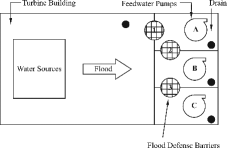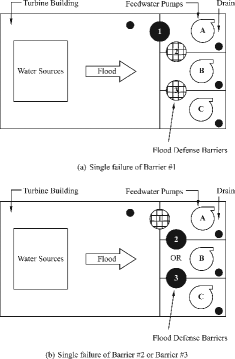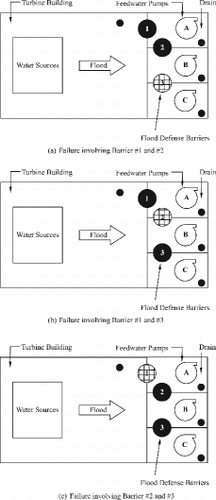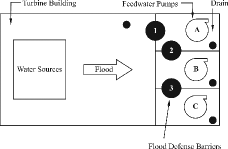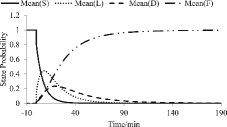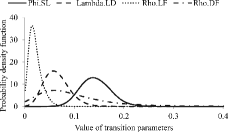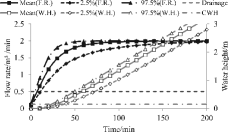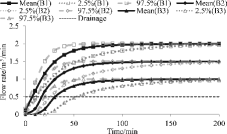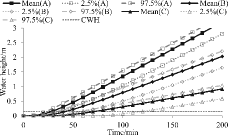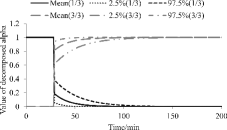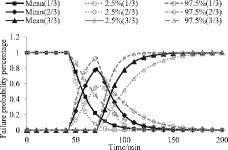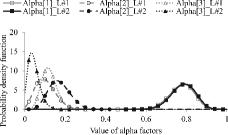Figures & data
Table 1. Possible failure types for two layouts.
Table 2. Description of four Markov states.
Table 3. Description of four transition parameters.
Table 4. Uncertainty distribution assumption for Markov parameters.
Table 5. Assumed water flow rate through barriers for Markov states.
Table 6. Calculation assumption for water flow rate through a barrier.
Table 7. Hypothetical experiments with states account for the estimation of transition parameters.
Table 8. Hypothetical flow rate of flood water sources.
Table 9. Failure probability distributions for different scenarios.
Table 10. The estimated decomposed alpha factors for internal flood.



